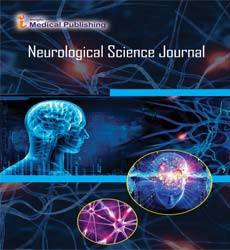Introduction to Neural Circuits
Cheol Lars*
Department of Neurology, University of Toronto, Toronto, Canada
- *Corresponding Author:
- Cheol Lars
Department of Neurology,
University of Toronto,
Toronto,
Canada
E-mail: Lars.Cheol@581.ca
Received Date: October 04, 2021 Accepted Date:October 18, 2021 Published Date: October 25, 2021
Citation: Lars C (2021) Introduction to Neural Circuits. Neurol. Sci. Vol.5 No.5: e005
Editorial Note
Neurons never work in disarrangement; they are coordinated into troupes or circuits that cycle explicit sorts of data. Albeit the game plan of neural circuits shifts enormously as per the expected capacity, a few provisions are normal for all such groups. The synaptic associations that characterize a circuit are regularly made in a thick knot of dendrites, axons terminals, and glial cell measures that together establish neutrophil the addition (Phil comes from the Greek word Phil, signifying "felt").
Hence, the neutrophil between nerve cell bodies is the area where most synaptic availability happens. The heading of information tsream in a specific circuit is crucial for understanding its capacity. Nerve cells that convey data toward the focal sensory system (or farther midway inside the spinal rope and mind) are called afferent neurons; nerve cells that divert data from the cerebrum or spinal string (or away from the circuit being referred to) are called efferent neurons. Nerve cells that just partake in the parts of a circuit are called interneurons or nearby circuit neurons. These three classes—afferent neurons, efferent neounr s, and interneurons—are the fundamental constituents of every single neural circuit.
Neural circuits are both physical and useful elements. A straightforward model is the circuit that supports the mitotic (or "automatic") spinal reflex. The afferent appendage of the reflex is tactile neurons of the dorsal root ganglion in the outskirts. These afferents target neurons in the spinal string. The efferent appendage contains engine neurons in the ventral horn of the spinal string with various fringe targets: One efferent gathering task to flexor muscles in the appendage, and the other to extensor muscles.
The third component of this circuit is interneurons in the ventral horn of the spinal string. The interneurons get synaptic contacts from the tactile afferent neurons and make neurotransmitters on the efferent engine neurons that venture to the flexor muscles. The synaptic associations between the tactile afferents and the extensor efferent are excitatory, causing the extensor muscles to contract; on the other hand, the interneurons enacted by the afferents are inhibitory, and their initiation by the afferents decreases electrical action in engine neurons and causes the flexor muscles to turn out to be less dynamic. The outcome is a correlative actuation and inactivation of the synergist and bad guy muscles that control the situation of the leg.
There are two fundamental ways to deal with estimating electrical movement: extracellular recording where a cathode is put close to the nerve cell important to identify action, and intracellular recording where the anode is set inside the cell. Such accounts distinguish two fundamental kinds of signs. Extracellular accounts basically identify activity possibilities, the win big or bust changes in the potential across nerve cell layers that pass on data starting with one point then onto the next in the sensory system. Intracellular accounts can recognize the more modest reviewed potential changes that serve to trigger activity possibilities. These evaluated setting off possibilities can emerge at either tangible receptors or neural connections and are called receptor possibilities or synaptic possibilities, individually.
Open Access Journals
- Aquaculture & Veterinary Science
- Chemistry & Chemical Sciences
- Clinical Sciences
- Engineering
- General Science
- Genetics & Molecular Biology
- Health Care & Nursing
- Immunology & Microbiology
- Materials Science
- Mathematics & Physics
- Medical Sciences
- Neurology & Psychiatry
- Oncology & Cancer Science
- Pharmaceutical Sciences
